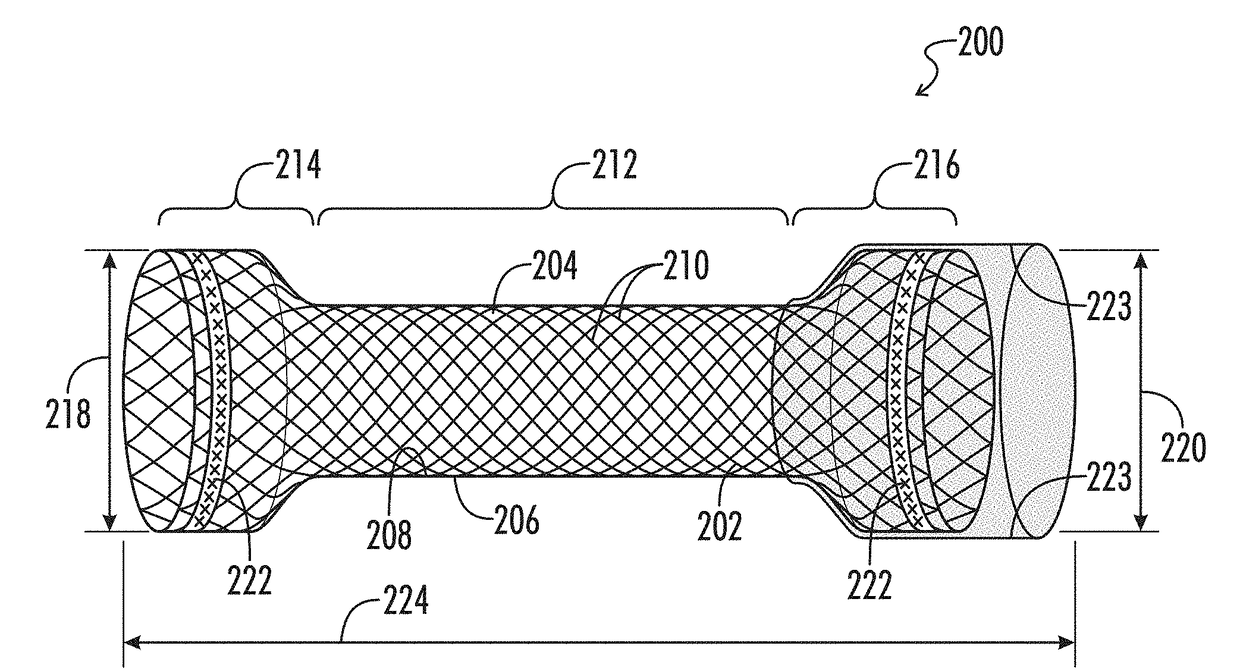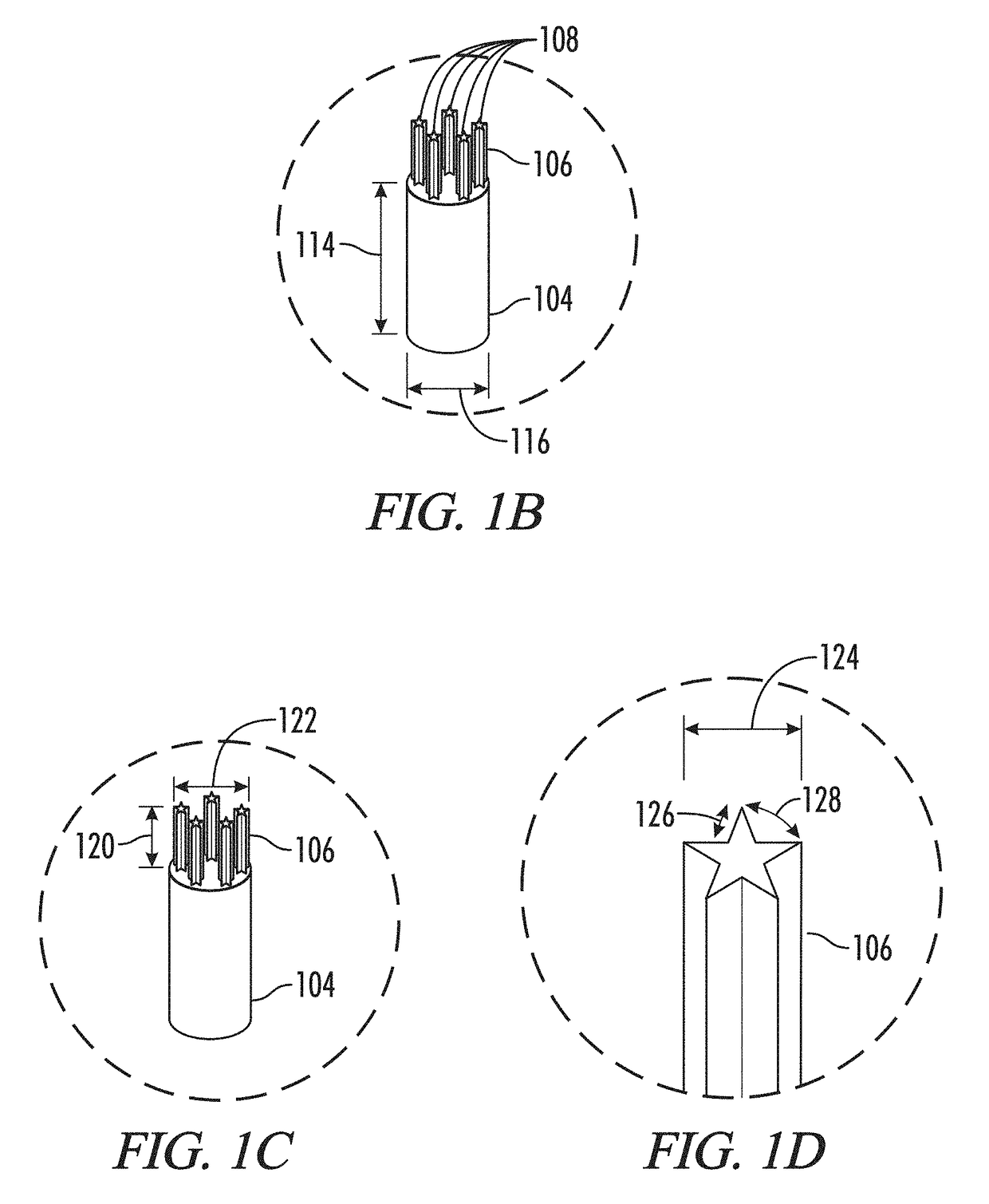Stents with improved fixation
a technology of stents and fixation, applied in the field of stents, can solve problems such as inability to swallow liquids, prolapsed dysphagia, and difficulty in swallowing, and achieve the effect of preventing stent migration
- Summary
- Abstract
- Description
- Claims
- Application Information
AI Technical Summary
Benefits of technology
Problems solved by technology
Method used
Image
Examples
Embodiment Construction
[0042]The following description is an exemplification of the principles of the present disclosure and is not intended to limit the disclosure to the particular embodiments illustrated herein.
[0043]Stents perform three functions: 1) stent or hold open a body lumen, 2) prevent ingrowth into a body lumen, and 3) anchor or fix functions 1 and 2 at a specific site within the body lumen.
[0044]Generally, there is no clinical requirement that the stent part responsible for the anti-migration or fixation feature should be fixed permanently to the stent part responsible for the radial force component. In other words, the anti-migration function and the stent function can be completely decoupled structurally. In this disclosure, the stent is considered to be all components of a lumen opening device implanted in a body.
[0045]Accordingly, the embodiments can be divided into three categories: 1) fixation regions integral to the stent, 2) fixation regions separable from the stent, and 3) fixation ...
PUM
| Property | Measurement | Unit |
|---|---|---|
| contact angle | aaaaa | aaaaa |
| diameter | aaaaa | aaaaa |
| height | aaaaa | aaaaa |
Abstract
Description
Claims
Application Information
 Login to View More
Login to View More - R&D
- Intellectual Property
- Life Sciences
- Materials
- Tech Scout
- Unparalleled Data Quality
- Higher Quality Content
- 60% Fewer Hallucinations
Browse by: Latest US Patents, China's latest patents, Technical Efficacy Thesaurus, Application Domain, Technology Topic, Popular Technical Reports.
© 2025 PatSnap. All rights reserved.Legal|Privacy policy|Modern Slavery Act Transparency Statement|Sitemap|About US| Contact US: help@patsnap.com



